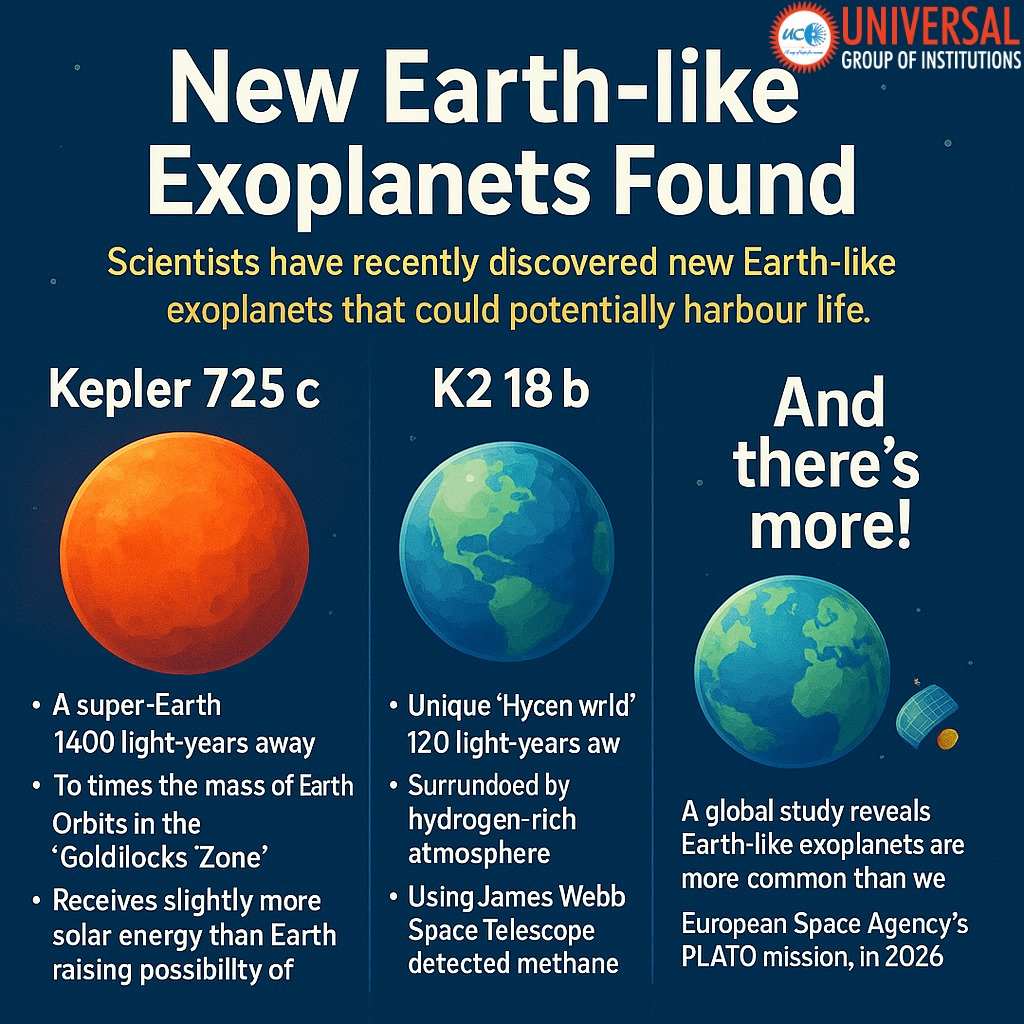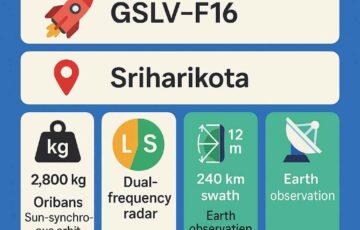New Earth-like Exoplanets Discovered: Are We Truly Alone?
New Earth-like Exoplanets Discovered: Are We Truly Alone?
In one of the most exciting developments in modern astronomy, today planet news reveals that scientists have discovered two new planets that may have the potential to host life. These findings—based on cutting-edge observations and analysis using both new detection methods and the James Webb Space Telescope—could reshape our understanding of habitability beyond our solar system and provide insights into the potential for a planet with life.
Kepler-725 c: A Super-Earth in the Goldilocks Zone
The first of these remarkable new planets is Kepler-725 c, located approximately 2,472 light-years away. This exoplanet belongs to the class of super-Earths, planets that are larger than Earth but smaller than ice giants like Neptune. Kepler-725 c is estimated to be about 10 times the mass of Earth, with a planetary radius significantly larger than our home planet, and orbits its parent star at a distance of roughly 0.67 AU (astronomical units)—well within the star’s habitable zone, or “Goldilocks zone.” This is the region where temperatures are just right for liquid water to potentially exist, making it a prime candidate in the search for a planet with life.
What makes Kepler-725 c particularly intriguing is its discovery through Transit Timing Variation (TTV), a technique that identifies gravitational influences between multiple planets in the same system. It is the first time a super Earth within a habitable orbit has been identified through this method. Moreover, it receives slightly more stellar radiation than Earth, hinting at conditions that might sustain an atmosphere and possibly water—key ingredients for life as we know it. The planet’s orbital period and potential for tidal locking are factors that astronomers are eager to study further, especially in relation to its atmosphere and potential habitability. The presence of an atmosphere on Kepler-725 c could provide crucial protection from harmful radiation and help maintain stable surface conditions.
K2-18b: A Hycean World Rich in Potential
The second planet, K2-18b, discovered by the K2 mission, is located just 120 light-years away in the Leo constellation and orbits a cool red dwarf star. Slightly larger than Earth, K2-18b is classified as a sub-Neptune—a type of planet between the size of Earth and Neptune. These worlds, also known as sub-Neptunes, are now considered highly promising in the search for extraterrestrial life and habitable environments. Interestingly, K2-18b could be considered a sub planet of Earth in terms of its potential habitability, despite being larger in size.
Recent atmospheric observations made by the James Webb Space Telescope (JWST) using its MIRI instrument have unveiled a fascinating chemical profile of the K2-18b atmosphere. Scientists detected methane (CH₄) and carbon dioxide (CO₂), both of which are considered biosignature gases—gases that, if found in significant amounts and appropriate ratios, could indicate the presence of life. The presence of water vapour in the K2-18b atmosphere further supports the potential for life on this alien planet.
But the most groundbreaking revelation was the tentative detection of dimethyl sulfide (DMS)—a molecule that, on Earth, is almost exclusively produced by biological activity, particularly by marine phytoplankton. While the DMS signal is not yet statistically confirmed, its presence suggests the potential for biological processes occurring under alien oceans, making K2-18b a prime target for further study in the search for a planet with life.
K2-18b is considered a hycean planet, a type of world that could potentially support life in its hydrogen-rich atmosphere. The planet’s atmosphere, which is much more extensive than Earth’s, could contain various carbon-bearing molecules and even ammonia. These atmospheric components, along with the planet’s status as an ocean planet, make it an intriguing subject for astrobiologists studying potential marine environments beyond Earth.
Why This Matters
These discoveries of new planets mark a major leap forward in exoplanet science. Kepler-725 c demonstrates how new detection methods, including those used by the Kepler space telescope, can uncover habitable-zone planets that might have been missed by traditional techniques like the transit method. Meanwhile, K2-18b, with its rich atmosphere and potential biosignature gases including methane, has become one of the most compelling candidates in the ongoing search for life beyond Earth.
Together, these planets reveal that the conditions necessary for life might not be rare, and that our galaxy could be teeming with potentially habitable worlds—each with its own story, ecosystem, and evolutionary path. The discovery of these new planets and their potential for hosting life raises the intriguing question: is there another planet like Earth with humans?
As future missions like ESA’s PLATO and next-generation observatories come online, astronomers expect to find hundreds more such candidates. With improved instrumentation and spectroscopic analysis techniques, we may one day answer the age-old question: Are we alone in the universe?
Until then, discoveries like Kepler-725 c and K2-18b serve as powerful reminders of how much more there is to explore—and how incredibly vast, mysterious, and promising the cosmos truly is. The search for habitable environments and the potential for life on other planets continues to drive our exploration of the universe, with each new planet discovered bringing us closer to understanding our place in the cosmos.
The study of these exoplanets involves careful consideration of various factors, including their planetary mass, stellar activity of their host stars, and the complex interplay between their atmospheres and potential surface conditions. As our understanding of these distant worlds grows, so does our appreciation for the diversity of planetary systems and the possibility of finding a true Earth analog among the stars.
The atmosphere of K2-18b, in particular, has become a focal point for researchers. Its composition, including the presence of methane and other gases, provides valuable insights into the potential for life-supporting conditions on sub-Neptunes. The study of K2-18b’s atmosphere could pave the way for understanding similar planets in the K2 catalog, potentially revealing a new class of habitable worlds.
Interestingly, while no K2-18b real image exists yet, astronomers have created detailed models based on the K2 mission data. These models help visualize what the planet might look like, with some speculating that it could exhibit Neptune-like lights in its upper atmosphere due to its size and composition. The possibility of Neptune lights on K2-18b adds another layer of intrigue to this fascinating sub-Neptune.
The K2 mission has been instrumental in expanding our knowledge of exoplanets. By creating a comprehensive K2 map of target stars and their potential planets, astronomers have significantly increased the number of known exoplanets. This wealth of data from the K2 catalog continues to yield new discoveries and insights into planetary formation and evolution.
As we continue to explore the K2 data and other exoplanet surveys, we may uncover more planets like K2-18b, each with its unique atmospheric composition and potential for habitability. This ongoing research not only expands our knowledge of planetary formation and evolution but also brings us closer to answering fundamental questions about the prevalence of life in the universe.
It’s worth noting that while K2-18b is an exciting discovery, it’s not the largest known planet. That title belongs to Stephenson 2-18, a hypergiant star so enormous that if it were placed at the center of our solar system, its surface would extend beyond the orbit of Saturn. Comparing the vast differences between planets like K2-18b and stars like Stephenson 2-18 highlights the incredible diversity of celestial objects in our universe.
As we continue to push the boundaries of exoplanet research, each new discovery from missions like K2 brings us closer to understanding the true nature of our cosmic neighborhood and the potential for life beyond Earth. The study of sub-Neptunes and their atmospheres, including the intriguing K2-18b, remains at the forefront of today’s planet news, promising exciting revelations in the years to come. Future research will likely focus on developing more sophisticated models of sub-Neptune atmospheres, helping us better understand the conditions that might exist on these alien worlds.






